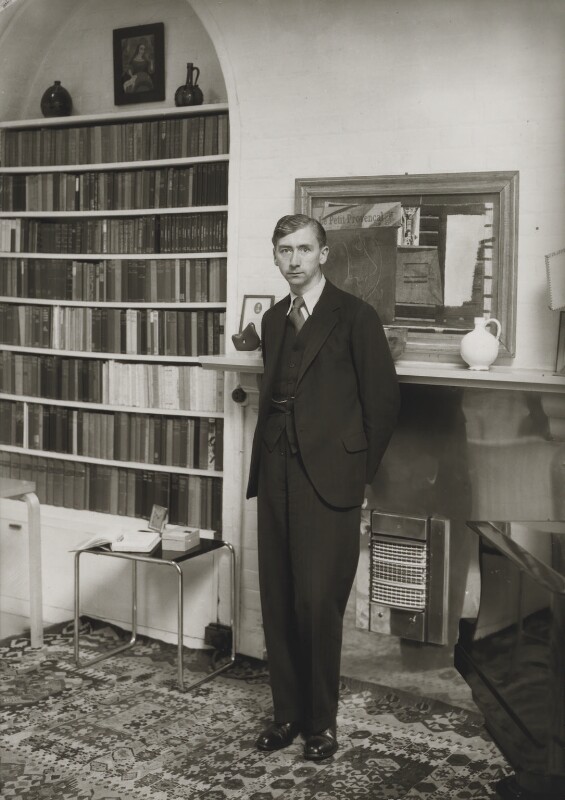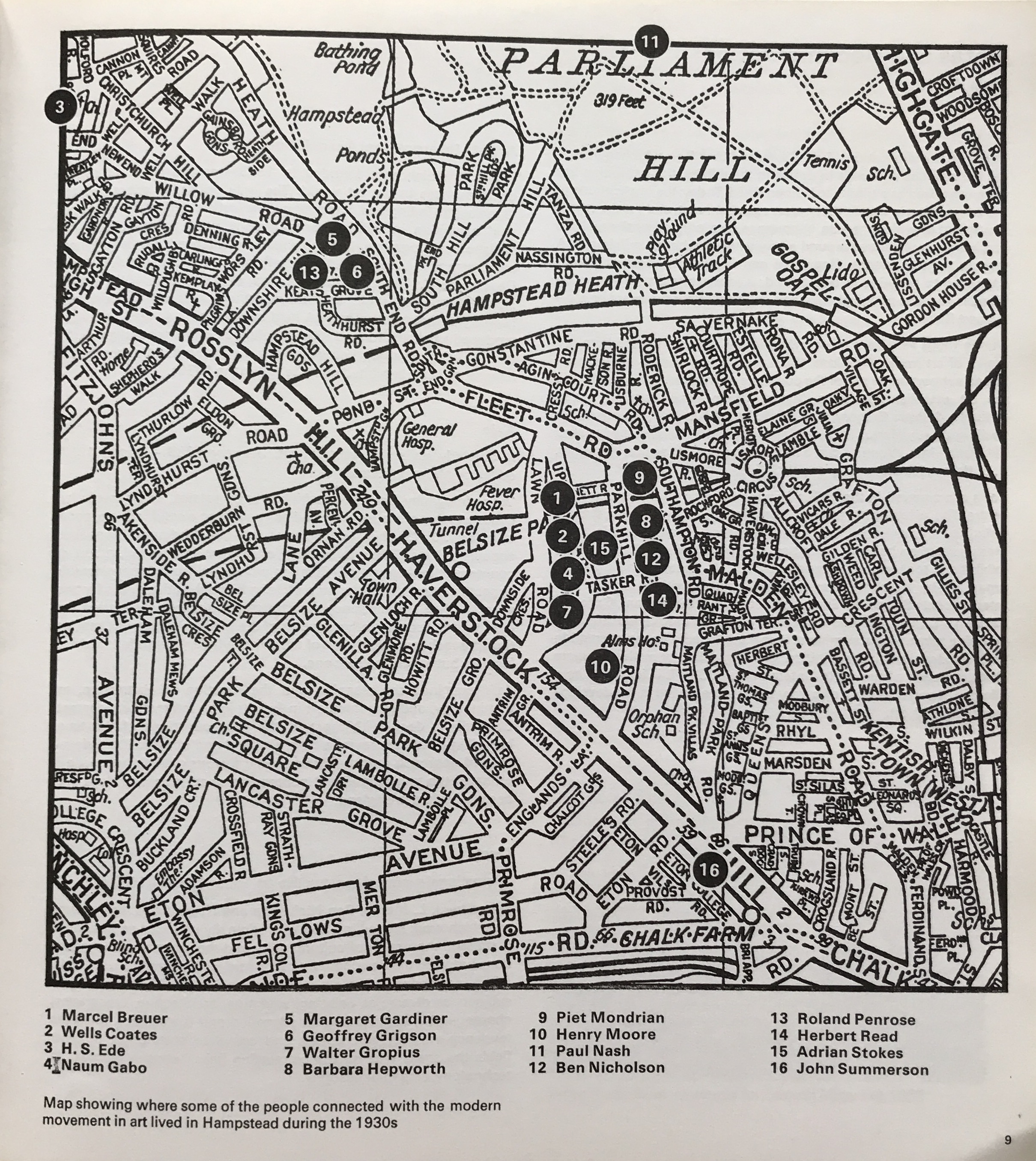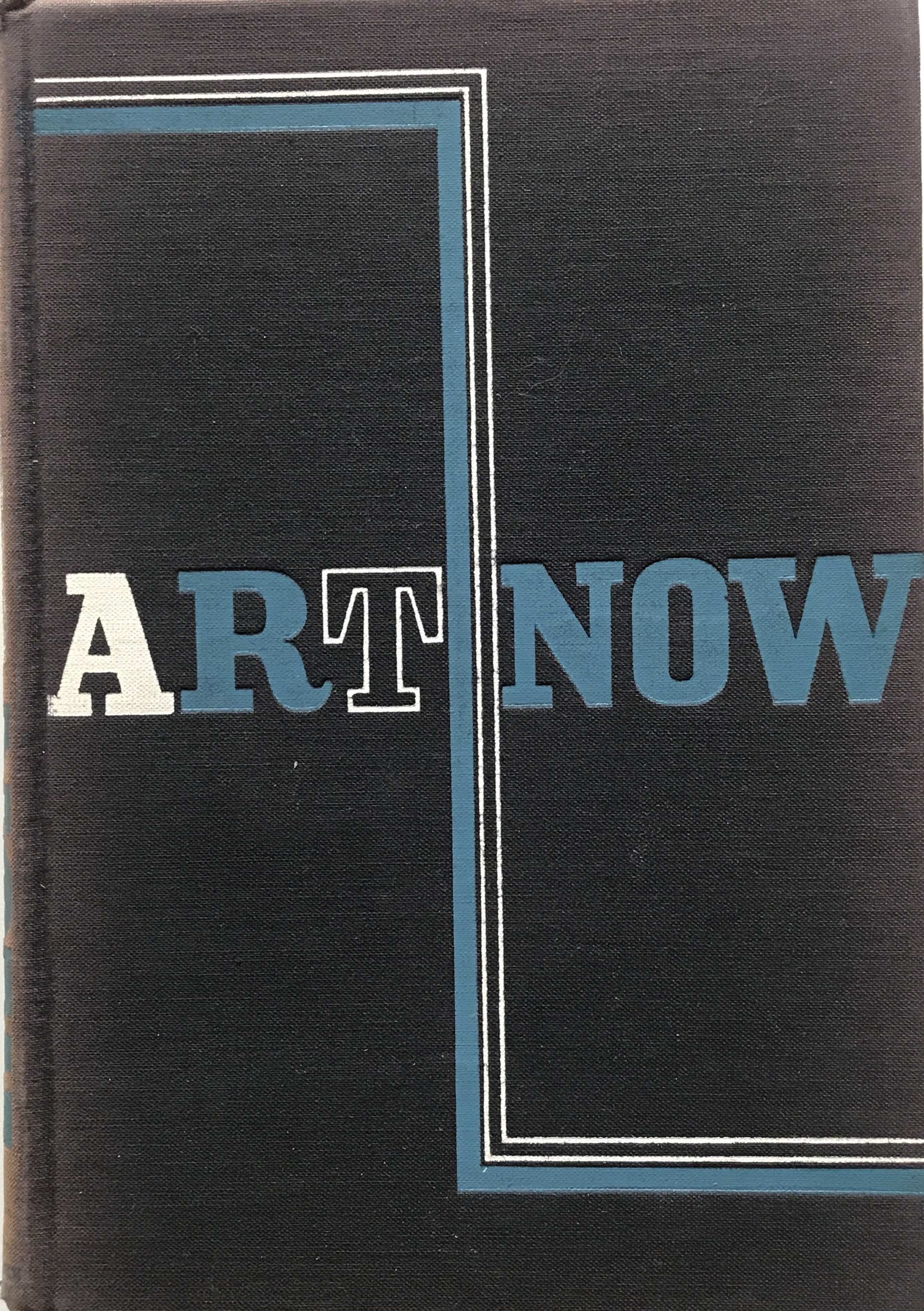Archive
Herbert Read
- Herbert
- Read
Sir Herbert Edward Read
- 04-12-1893
- Stonegrave, Yorkshire (GB)
- 12-06-1968
- Stonegrave, Yorkshire (GB)
- Art HistorianArt CriticPoet
The British art historian Herbert Read established himself as a central figure in the London artistic scene in the 1930s and was one of the outstanding supporters of exiled artists.
Word Count: 30

Howard Coster, Herbert Read, 1934 (Art in Britain 1930–40 1965, 5). 
Howard Coster, Herbert Read, 1934 (© National Portrait Gallery, London, NPG x19537). 
“Map showing where some of the people connected with the modern movement in art lived in Hampstead during the 1930s.” (Art in Britain 1930–40 1965, 9). 
Mall Studios behind Parkhill Road in Hampstead, occupied during the 1930s by Barbara Hepworth, Ben Nicholson, Cecil Stephenson and Herbert Read (Art in Britain 1930–40 1965, 8). 
Herbert Read. Art Now. An Introduction to the Theory of Modern Painting and Sculpture. Harcourt, Brace & Company, 1933, cover (METROMOD Archive). Art in Britain 1930–40 centred around Axis, Circle, Unit One, exh. cat. Marlborough Fine Art, London, 1965.
Bohm-Duchen, Monica. “Modernist Sanctuary: Hampstead in the 1930s and 1940s.” Insiders Outsiders. Refugees from Nazi Europe and their Contribution to British Visual Culture, edited by Monica Bohm-Duchen, Lund Humphries, 2019, pp. 157–164.
Carullo, Valeria. Moholy-Nagy in Britain 1935–1937. Lund Humphries, 2019.
Chambers, Emma. “Schwitters und England.” Schwitters in England, edited by Emma Chambers and Karin Orchard, exh. cat. Sprengel Museum Hannover, Hannover, 2013, pp. 6–19.
Erlhoff, Michael, and Klaus Stadtmüller, editors. Kurt Schwitters Almanach, vol. 8. Postskriptum-Verlag, 1989.
MacLean, Caroline. Circles & Squares. The Lives & Art of the Hampstead Modernists. Bloomsbury, 2021.
Moholy-Nagy, László. Letter to Ben Nicholson. Ben Nicholson Papers (Tate Library and Archive, London, 29 March 1946).
Nyburg, Anna. Émigrés. The Transformation of Art Publishing in Britain. Phaidon, 2014.
Nyburg, Anna. “Émigré Art Publishers.” Insiders Outsiders. Refugees from Nazi Europe and their Contribution to British Visual Culture, edited by Monica Bohm-Duchen, Lund Humphries, 2019, pp. 115–119.
Read, Herbert. Art Now. An Introduction to the Theory of Modern Painting and Sculpture. Faber & Faber, 1933.
Read, Herbert. Art and Industry. The Principles of Industrial Design. Faber & Faber, 1934.
Read, Herbert. “A New Humanism.” Architectural Review, October 1935, p. 151.
Read, Herbert. “Paul Klee.” Paintings and Watercolours by Paul Klee, exh. cat. The Leicester Galleries, London, 1941a, pp. 2–6.
Read, Herbert. “Zum 50. Geburtstag von John Heartfield.” Freie Deutsche Kultur, no. 6, 1941b, p. 6.
Read, Herbert. Letter to Margaret Leischner. Margaret Leischner Papers (Bauhaus-Archiv Berlin, 5 December 1944).
Read, Herbert. “Foreword.” Nikolaus Pevsner. Visual Pleasures from Everyday Things. An attempt to establish criteria by which the aesthetic qualities of design can be judged, Council for Visual Education (C.V.E.), 1946, pp. 2–3.
Read, Herbert. “British Art 1930–1940.” Art in Britain 1930–40 centred around Axis, Circle, Unit One, exh. cat. Marlborough Fine Art, London, 1965a, pp. 5–6.
Read, Herbert. “A Nest of Gentle Artists.” (1962) Art in Britain 1930–40 centred around Axis, Circle, Unit One, exh. cat. Marlborough Fine Art, London 1965b, pp. 7–8.
Word Count: 313
University of Leeds Special Collections, Herbert Read Archive.
Word Count: 8
3 Mall Studios, Parkhill Road, Belsize Park, Hampstead, London NW3 (residence, 1933–c.1937).
- London
- Burcu Dogramaci. "Herbert Read." METROMOD Archive, 2021, https://archive.metromod.net/viewer.p/69/1470/object/5138-11267250, last modified: 28-04-2021.
-
Rosa SchapireArt HistorianLondon
The art historian Rosa Schapire, a supporter of Expressionist art, contributed to the presence of Expressionist art in England with loans and donations from her art collections rescued to London.
Word Count: 30
László Moholy-NagyPhotographerGraphic DesignerPainterSculptorLondonLászló Moholy-Nagy emigrated to London in 1935, where he worked in close contact with the local avantgarde and was commissioned for window display decoration, photo books, advertising and film work.
Word Count: 30
John HeartfieldArtistGraphic DesignerFotomonteur (mounter of photographs)LondonAfter escaping from his first exile in Prague in December 1938, the political artist John Heartfield lived in London since 1950, working for Picture Post and the publisher Lindsay Drummond.
Word Count: 28
Kurt SchwittersArtistPoetLondonThe artist and poet Kurt Schwitters lived in London between 1941 and 1945, where he stood in contact to émigré and local artists, before moving to the Lake District.
Word Count: 27
Margaret LeischnerTextile DesignerLondonThe designer Margaret Leischner lived in England from 1938, worked for textile and furniture companies, taught at the Royal College of Art and was honoured as Royal Designer for Industry.
Word Count: 29
Visual Pleasures from Everyday ThingsBookletLondonVisual Pleasures from Everyday Things is a booklet written in 1946 by the emigrated architectural historian Nikolaus Pevsner with the aim of aesthetic education and teacher training.
Word Count: 26
Farewell Dinner for Walter GropiusDinnerLondonFriends and colleagues came together on 9 March 1937 to send off the architect Walter Gropius and his wife Ise Gropius, who had decided to leave for the United States.
Word Count: 28
20th Century German ArtExhibitionLondonThe 20th Century German Art exhibition of 1938 gave visibility to artists who had been defamed at the Munich exhibition Entartete Kunst and were persecuted by the National Socialist regime.
Word Count: 29
Modern Art GalleryArt GalleryLondonThe Modern Art Gallery, founded by the émigré painter, sculptor and writer Jack Bilbo, was a forum for the presentation of modern art, specialising in the work of emigrant artists.
Word Count: 30
Thames & HudsonPublishing HouseLondonThe emigrants Eva Feuchtwang (later Eva Neurath) and Walter Neurath founded the Thames & Hudson publishing house in 1949, which published art history books, photo books and collection catalogues.
Word Count: 28
The Warburg InstituteResearch InstituteLondonThe Kulturwissenschaftliche Bibliothek Warburg in Hamburg achieved a new presence in London after 1933 under the name The Warburg Institute as a research institution with a library and photo archive.
Word Count: 29
Faber & FaberPublishing HouseLondonFaber & Faber shows the importance of publishing houses as supporters of contemporary art movements and of the contribution of emigrants, helping to popularise their art and artistic theories.
Word Count: 29
Julian HuxleyZoologistPhilosopherWriterLondonJulian Huxley was the director of London Zoo from 1935 to 1942 and worked closely with emigrant photographers, artists and architects, including Berthold Lubetkin, Erna Pinner and Wolf Suschitzky.
Word Count: 27
Marlborough Fine ArtArt GalleryLondonMarlborough Fine Art was founded in 1946 by the Viennese emigrants Harry Fischer and Frank Lloyd in the Mayfair district, focused on Impressionists, Modern and Contemporary Art.
Word Count: 26
Freie Deutsche KulturNewsletterLondonThe Free German League of Culture was an association of emigrant artists and authors who organised exhibitions, concerts and lectures. The events were announced in the Freie Deutsche Kultur newsletter.
Word Count: 30